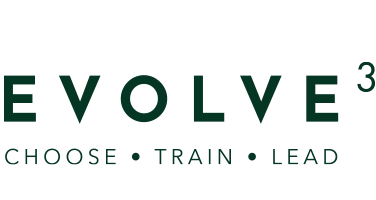
07 Mar What is Menu Engineering and how does it work?
We have marketing messages thrust upon us for much of our waking lives, whether we like it or not. However, a restaurant operator has the ability to place an advertisement in every customer’s hand right before they part with their money. Research tells us that the average dine-in guest spends just under 2 minutes perusing a menu before making a decision to order. The challenge is to put your most profitable menu items in front of your customers within that window of time.
This is where the art and science of menu engineering can be used to help improve restaurant profits. Here’s how to do it . . .
Step 1: Cost your menu correctly
While it may not be sexy, correctly costing your menu is a critical first step that can’t be avoided. You must know the exact cost of every menu item in dollar terms and as a % of the menu price, NOT including GST.
If you don’t know how to cost your menu, we run a Food Cost Control workshop that will teach you how to do it. There are also plenty of software options that can help – provided they’re used properly. Cooking the Books is one that a number of our clients use.
Step 2: Categorise your menu items
After costing every menu item, you’ll have a clear picture of which items are most profitable and which ones aren’t. From there, using recent sales figures, rank your menu items in order of popularity (figures from the last 4 weeks of trade is a good starting point – but the more data you have, the better). Then assign each menu item into one of the following categories . . .
• Stars – very profitable and very popular
• Plow-horses – very popular but not so profitable
• Puzzles – very profitable but not so popular
• Dogs – not very profitable and not so popular
When you categorise each menu item for profitability, give some consideration to how labour intensive they are. (More labour = less profitability)

Picture: Extract from https://www.rewardsnetwork.com/blog/menu-control-restaurant-costs/
Step 3: Make some decisions about how you treat each menu item
Now that you have some objective data, you can make some informed decisions about what to do.
Here are some ideas:
The “Stars” should feature prominently in your menu design. They should be made to standout on your menu so that customers notice them quickly. There are several design techniques you can use for this purpose that I’ll go through later.
The “Plow Horses” should be reviewed and tweaked if possible to be more profitable. Consider bundling them with other, more profitable menu items to be sold as a package or special.
As for the “Puzzles”, you should use menu design techniques to make them more appealing and more obvious on the menu, you should also encourage your front of house team to promote these items.
“Dogs” could be treated in a few ways. You could remove some of them from the menu all together; you could tweak their recipes to improve their profit margin; or you could give them deliberately understated descriptions on your menu by just listing the ingredients and the price.
Step 4: Design your menu to highlight your most profitable menu items
The key objective when designing a menu is to promote the menu items you want to sell the most.
The following menu design tips are a guide. For a tailored menu engineering service contact us.
• Use enticing descriptions to help high profit items stand out.
Adjectival descriptions of textures, flavours and colours appeal to the senses. They make it easier for a customer to paint a picture in their mind, adding to a sense of anticipation and desire for the item. A study by Cornell University (USA) found that adjectival descriptions not only sway a customer’s choice but can also leave them more satisfied at the end of the meal than if they had eaten the same item without the descriptive labelling.
For example, instead of merely saying “Chocolate cake”, try being more descriptive:
“Layered Chocolate Cake. Coffee-bathed chocolate gateau, Belgian chocolate filling, fluffy whipped cream and raspberry icing.”
One of my clients doubled their dessert revenue by rebranding their highest margin item. Here is a “before and after” comparison of the same dish as it appeared on the menu.
Before: “Sticky date pudding.”
After: “Sticky Date. A farm-style pudding made from choice dates, with a hint of ginger and blood orange, accompanied with house-made vanilla ice cream and delicate butterscotch sauce.”
• Use graphics, extra blank space, boxes, icons or pictures to highlight items you want to sell most.
These devices act as eye magnets and capture the reader’s attention quickly.
We eat with our eyes and when it comes to menu design, nothing appeals to the “I want it” part of someone’s brain as much as a high quality picture of the menu item. The magazine-quality photos on many restaurant websites are testament to this.
If photos of food don’t fit in with your restaurant’s aesthetic or market level, then graphic icons (along with an explanatory key) can be used to promote high profit items with great success. For some examples, consider a chef’s hat icon to denote “chef’s recommendation”, or an asterisk to denote “staff pick”, or ***** to denote “crowd favourite” or “most popular”. You can afford to get creative and have fun with this concept.
While minimalist in its design, this menu directs reader’s eyes towards high profit items by the use of lines and boxes. Where do your eyes end up when looking at this menu?

Picture: Extract from https://postperth.com/
Caution: The more items that are highlighted with visual cues or adjectival descriptions, the lower their impact will be, and your menu may begin to look cluttered. One visual cue or adjectival description per menu category is considered best practice.
• Position the items you want to sell where they will be easily seen.
When scanning vertically arranged menus, customers tend to spend the most time looking at the first and last items on a list. This is where to feature your most profitable items.
Place “Stars” and “Puzzles” in the hot zones. Hot zones are where customers tend to look first and most frequently. There are as many theories about hot zones on a menu as there are different menu formats. Most researchers seem to agree that when diners scan a menu, their eyes tend to gravitate first toward the top, then to the outside edges.
The next menu example features the premium banquet option (“Feed Me”) at the centre and top of the page. There is also clever use of an eye magnet in the form of a coloured box around the item. Other high profit items are promoted by boxes on the extreme right hand side near the bottom.

Picture: Extract from https://wahwahgee.com.au/
• Drop the dollar signs. They remind customers of the pain of paying, so get rid of them.
• Don’t organise by price. Presenting items in order of price (lowest to highest) makes it easy for guests to go shopping according to price. Second cheapest wine, anyone?
• Use nested pricing. Instead of having your prices appear at the end of a line of text, justified to the right side of the page, nest the prices up against the item in the same font. A diner is more likely to judge the dishes by their description rather than the price.

Picture: Extract from https://www.menucoverdepot.com/
• Use price decoys. By placing your most expensive dish at the top of your menu you can desensitise your guests to price, making other dishes seem more affordable and inviting.
Summary
A restaurant menu is a powerful point of sale tool that, if well-designed, will drive sales and improve profits. As most restaurant menus can be edited with relative ease, you will be well-served by experimenting with the design techniques mentioned. As the use of technology and contactless ordering systems increases, so do the opportunities for clever menu design.
Canny operators are seeking to rely less on the full service restaurant model as a response to the nationwide skills shortage, shrinking profit margins and pent-up post-lockdown demand. There has never been a more compelling argument for having well-designed menus that encourage the purchase of high profit items.
Whatever you try, make sure you cost your menu first, then measure the results of your engineering efforts so you can do more of what works and less of what doesn’t.
Finally, look beyond your menu in your quest for profits. The key drivers of sales and profit are your employees.
Consider how careful staff recruitment, training and effective team leadership can add to your bottom line.
Chris Lambert
Consultant and trainer
Evolve3 is Australia’s only specialist management hospitality consultancy and training company.



